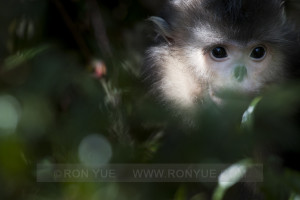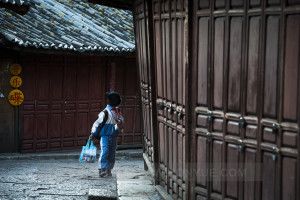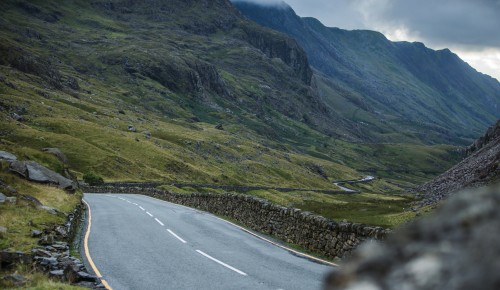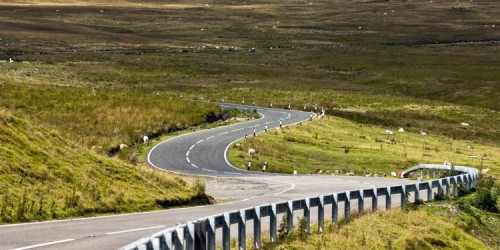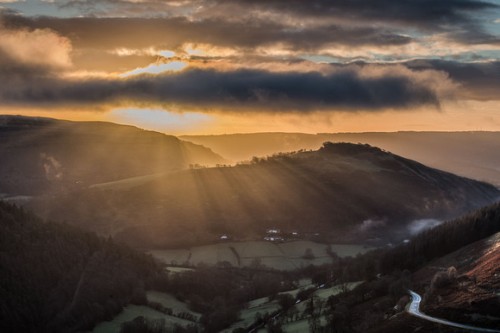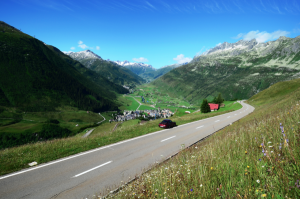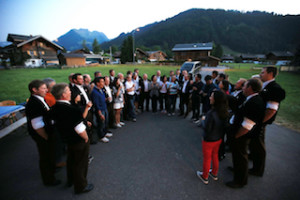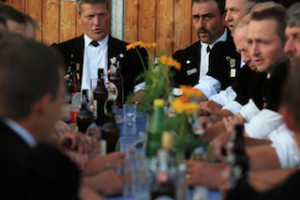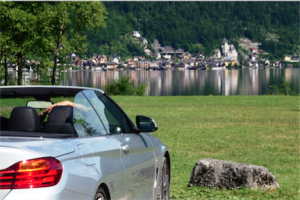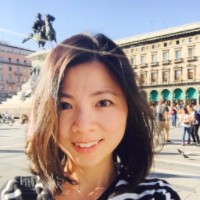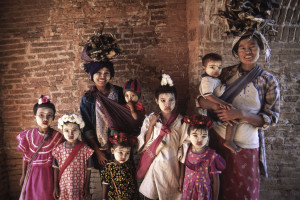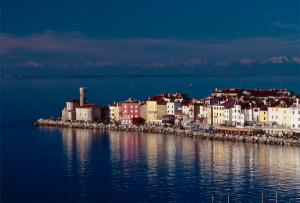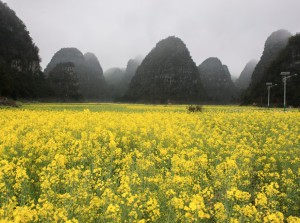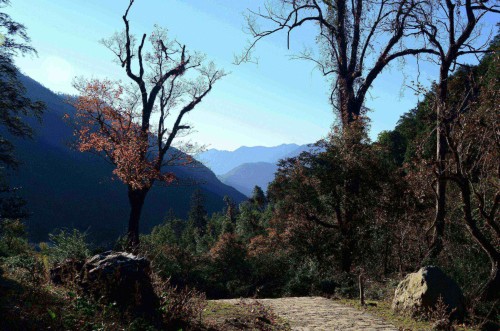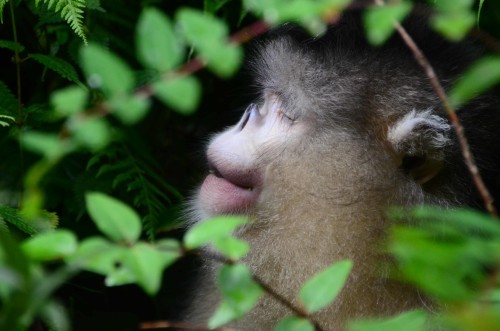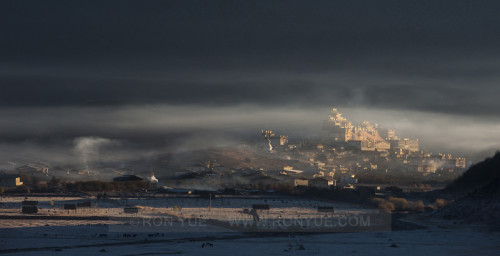Category: Uncategorized
Posted on 21 Jan, 2016
There is a certain romance about traveling in northwest Yunnan. Perhaps it is the isolation of driving through remote deep river valleys, or experiencing the ancient way of life that prevails here, on the edge of the Tibetan Plateau. Maybe it is the chance of close-up encounters with snub-nosed monkeys in lush mountain forests, or it could simply be the serenity of relaxing in the region’s surprisingly beautiful lodges and boutique hotels.
I love taking quiet early morning strolls along twisting cobbled lanes and over little bridges through the ancient town of Lijiang, and listening to the steady, mesmerizing chanting of monks in a particular candle-lit chapel. When I come here, I love to soak up the tranquillity of these surroundings, whether walking amongst fluttering prayer flags around a secluded forested shrine, or looking out over a sea of rice fields at dusk.
There’s something here to appeal to the most jaded traveller, but moments of sheer magic lie in wait here for keen photographers. One chilly fall morning, on the last day of a photography trip, I convinced our group to head over to a location where I thought we would have a fantastic view of Shangri-La’s Ganden Sumtseling Monastery in the distance. I had never been to this particular spot at sunrise before, but my intuition was telling me that I needed to go there. As we waited for the sun to appear, I could see smoke rising from the chimneys of Tibetan homes and mist off the nearby lake swirling up around the monastery. All that we needed was a bit of sunlight to add the final touches. When the first rays glistened off the monastery’s golden roof, the mountains behind still in shadow, the scene was transformed. We excitedly photographed for the next little while, forgetting about the bite of morning cold. When it came time to leave for the airport and begin our journey home, I thought to myself again as I had many times before, “What is photography if not the art of painting with light?”
Posted on 12 Jan, 2016
Fifteen minutes of pleasure is quite something when it comes to some activities – or so Dr. Tatiana of Sex Advice to all Creation fame, tells me – but when it comes to driving, I have high expectations. I grew up careening through the Austrian Alps, where the roads are gorgeous and men do go the distance, and in my Alpine Republic no one would get out of bed for fifteen minutes of driving, no matter how sinewy, how sensual, how sexy the road might possibly be.
“Try the Horse Shoe Pass”, my friend suggested in response to my question “Where should I go for a bit of driving fun?” The route my friend is describing – the Horse Shoe pass from Llangollen along the A543 and the A5104 – will take no more than fifteen minutes or so to drive. But it’s two to three hours from London; add in coming back and it’s nearly six hours. Six hours of highway driving, on a Friday for god’s sake, for a quarter of an hour on a sinewy road?
Alas, I left Austria a long time ago and now I am desperate. The bright sunshine of this lovely autumn day makes the decision for me and I set out northwest on the M40 toward Birmingham. I’m not even an hour on the road when clouds begin to line the distant horizon. Still, the sun is overhead and almost the entire sky a solid blue.
But by the time I leave Birmingham behind, rain has set in and my spirits are as dull as the sky overhead. I take the M6 north, the M54 toward Telford, then I’m on the A5 toward Shrewsbury. The rain now is not falling, but sweeping across me in near-horizontal sheets chased by low-hanging clouds.
I enter Wales and, bereft of dreams of fifteen minutes of bliss, I contemplate the down-to-earth challenge of pronouncing Welsh words without vowels. (Later in the day I see a place name that takes the cake: “Pllgwyngyll”. Thank heavens that’s not where I am going because I wouldn’t, in my life, be able to ask for directions to it.)
Twenty five miles to Llangollen. The road is covered with, and made slippery by, brown, mushy leaves. At the rate that I am going, the many speed camera signs that I see – Camerau Cyflymder Heddlu – seem pointless. Who could possibly speed? And indeed, there don’t seem to be any speed cameras, only these signs, like powerless scarecrows, an empty threat as far as I could tell.
I am now only a few minutes away from Llangollen where the A542 turns off to lead north over the Horse Shoe Pass. The fifteen minutes are about to begin, but it seems less likely than ever that it will be a magical experience.
But miracles do happen. And so, let the fifteen minutes begin. The instant I cross the bridge over the river Dee in Llangollen, the wind picks up and carries away the driving rain, leaving behind only a faint drizzle which, a few breaths later, vanishes altogether. All that remains, for the moment, is the wind and the low scudding clouds. In less than two minutes, I’ve left Llangollen behind, cranked up Anastacia Not that Kind and started up the Horse Shoe Pass. It begins with a few long-stretching bends and then twists through two serpentines along the left slope of a wide valley from which protrude thin slices of sharp-angled, black-grey slate.
Four minutes. I have reached the top of the pass, all 1,367 feet of it, no more than the height of an Alpine valley. On my right, I am invited to buy Horse Shoe Gifts at the improbably named Ponderosa Café. My heart beat has just revved up. You mean, this is it? Yes, as far as the Horse Shoe is concerned, but no need to take a cold shower just yet.
As I begin the descent into the Northern Wales highlands that stretch away from me for as far as my eyes can see, the cloud cover cracks open to my left and the darting rays of the setting sun burst through, at 3:30 in the afternoon. It is one of those eerie moments when the world appears brighter then it is ever meant to be. The lid of clouds is still near-black and covers the earth from due East all the way across to the peep hole through which the sun unleashes its bursts of light. The contrast is startling. It should be dark, dark almost as at night, but it isn’t. The landscape lights up as if shone upon by a thousand suns. The grass is so green it jumps off the fields and the shadow of anything that stands in the way of the sun is as sharp as the blade of a razor. Everything is so near I can touch it with my eyes and my hands. The horizontal rays of the sun are streaming across the Welsh hills to set them alight.
Eight minutes. I turn left to enter the A5104 and am now driving West, directly into the sun. I am electrified by the landscape and my rushing through it. The black shadows of white sheep. A rainbow with colours as sharp and iridescent as ever I have seen, no more than two to three hundred yards from base to base, stands mightily before me, almost inviting me to drive through it to enter a different world. Occasionally, puddles and cattle grids make my car float for a split second and send a shiver through my spine. Leafless trees, ghosts of summer, fly toward and then through me. A flock of migrating birds flickers low across the road, as if trying to avoid colliding with the ominous cloud ceiling. The road itself is narrow and beautifully winding, not too tight, but certainly also not too straight. The surface is sealed with rough, gripping tarmac for the most part and lined by hedges, some of them high-growing bushes, neatly trimmed, others walls of rocks diligently and carefully stacked one on top of the other. Very British.
Twelve minutes. As I drive into the sun, hip-hopping from turn to turn, I am squinting my eyes. The world glistens because everything is still drenched. The meadows are soaked. The road is streaming and steaming. The birds’ feathers are damp. The trees are dripping. The sky, too, is wet. Everything I see sparkles and my eyes are filled with flashes of light, most of them white, some of them red or yellow or orange, cascades of turning leaves gleaming in the light.
I ride my car, spur it on and will it to move. Yet it has its own life and its own rhythms that it presses on me. One moment, I am entirely relaxed and made pliable from doing what I love, not minding in the least being thrown around by an animated object with whom I am wholly entwined and together as one. A moment later, I am nervously excited as every turn, and every shift, makes the car teeter on a slippery edge, giving me all the symptoms of fear while, at once, making me quiver with all the sensations of pleasure.
Fourteen minutes. No, no, this mustn’t be. I don’t want to see what I am seeing, but there it is. Only a few hundred yards away, the A5104 rejoins the A5. As I come to a halt and look right and then left onto the empty A5, the sun disappears behind a cloud, the spectacle fades with the fall of the curtain. I turn off Anastacia. There is near-darkness, stillness and silence, except for my heart pounding. Fifteen minutes.
Posted on 18 Dec, 2015
Welcome to our quarterly update, a whirlwind summary of what we’ve been up to in the past few months and what is to come in 2016 besides the smell of ginger bread cookies my wife will be baking in our kitchen this weekend.
Looking back…
The second half of 2015 stands out because we saw, at last, our first journeys in Europe. Given that “On the Road in the Europe” has been gestating for 15 years, it is with a great sense of pride that we can finally introduce our first itineraries in the Europe – to watch a beautiful video of our journeys in the Alps, click here.
I have two memories from our European journeys this autumn that I would like to share with you.
First, in Gstaad, a small Swiss town, we had arranged the surprise appearance of a Jodl (or Yodel) Choir to entertain our group while they dined on fondue one night. As the Swiss singers yodeled, they coaxed our guests to join their song.
Though initially shy, one of our Hong Kong guests suddenly seized the initiative and launched into a rendition of Teresa Teng’s classic, “The Moon Represents My Heart” (月亮代表我的心) for the Swiss yodelers, with the remainder of our guests swiftly joining him for the chorus. Despite their lack of a common language (the yodelers speaking a Swiss dialect that I found difficult to understand myself), the two groups sang to each other with moving warmth, and toasted each other with infectious enthusiasm.
On our second foray into Europe, I was immensely pleased when our guests all selected open-top cars, perhaps following my advice that, for our European journeys, you “can drive any car you like, so long as it is a cabriolet!” Even on the trip’s rare grey mornings, our small convoy would roll away from the last night’s hotel, each car with its top down. When we pulled into the next hotel’s driveway that evening, the tops would still be rolled back, having remained that way throughout the drive. It was wonderful to see so much enthusiasm for driving in the crisp, fragrant mountain air of the Alps. 一百分!100 points to all of the participants!
In the second half of 2015, our team grew with Peifen, Liu (劉佩芬) and Kayin, Chau (周珈妍) joining us.
Peifen is based in Taiwan. She brings a breath of fresh air into the development of our business there, and in a very short period of time she has turned many customers into fans of hers and On the Road.

Kayin
Kayin has joined our Hong Kong team and now takes care of “Operations” – all the things that need to happen before a group of guests can hit the road; reserving hotel rooms, renting cars, booking flights and a million other details. This role was formerly filled by Cathy Choi, who is now focusing on marketing our journeys in Hong Kong.
Looking forward…
We’re in the midst of developing two new journeys, one in Asia, and one in Europe:
2016 will see the launch of On the Road in Burma, if I can call it this. We have long wanted to offer driving journeys in this remarkable country, and in January and February we will complete our ground research so that we can – fingers crossed! – begin taking bookings for our first journeys there in November 2016. Stay tuned!
In March, we will continue our research for a new set of European itineraries in the former Austro-Hungarian Empire, with the focus on the Czech Republic, Slovenia and Croatia. Our initial research has been incredibly exciting and we can’t wait to share the gems of cultural and scenic beauty that we’re discovering in this region!
This look ahead wouldn’t be complete without a brief mention of our upcoming journeys:
Our all new photography journey in Yunnan takes in three of the province’s most photogenic places: the striking fields of red earth around Dongchuan, the golden sea of rapeseed flowers that surrounds Luoping’s otherworldly karst scenery, and the “Mirrors of God” paddy fields outside Yuanyang. The journey starts on March 4th – it’s not too late to make time to join Ron and our team!
Over Easter, our “Family Adventures: Travel Photography in Yunnan” journey with Ron is fully booked, but there are two border-crossing journeys – one from Shangri-La via Laos to Chiang Mai in Thailand ; the other from Kunming via Laos to Mai Chau in Vietnam – that you will not regret joining. The variety of cultures, cuisines, landscapes and roads you will experience along both these routes is sure to make the holiday especially memorable!
Happy Holidays!
And now off to Perth, Australia, I go to celebrate the holidays with my wife Angie’s large Chinese family. Since they can all drink – no faces turning red in this family! – and all love to cook, I am, as always, in for a treat.
I wish you, your family and friends, wonderful end-of-year holidays too and thank you for all your interest and kind support throughout the years.
Posted on 17 Dec, 2015
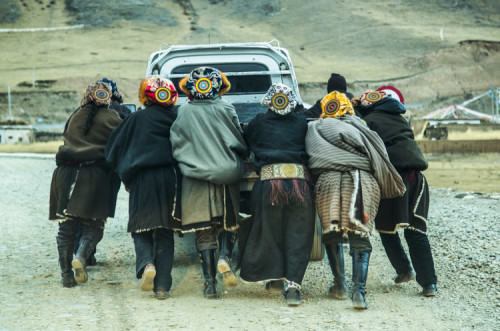 Most of my travel this year has been restricted to the armchair variety – reading about others’ journeys and reliving my own. My mind returns again and again to certain trips; a cycling tour of New Zealand and a very bumpy journey across Myanmar on public transport last year, and a meandering trip to Kashgar the year before. Eventually, I realised that my fondest memories were of the journeys where I felt that I made a connection with the place and the people I travelled amongst, journeys where I’d lingered rather than rushed.
Most of my travel this year has been restricted to the armchair variety – reading about others’ journeys and reliving my own. My mind returns again and again to certain trips; a cycling tour of New Zealand and a very bumpy journey across Myanmar on public transport last year, and a meandering trip to Kashgar the year before. Eventually, I realised that my fondest memories were of the journeys where I felt that I made a connection with the place and the people I travelled amongst, journeys where I’d lingered rather than rushed.
With everyday life often feeling like a hectic, headlong dash between home, work and social engagements, many of us wish to do nothing more on vacation than lie on a beach with a book. Others may prefer the other end of the spectrum and strive to fit as much as possible into a few precious days off, tearing across a continent on a breathless five-countries-in-four-days tour. Either option seems a reasonable reaction to the “time poverty” that we increasingly experience; however, another more meaningful way of seeing the world has recently gained popularity – Slow Travel.
 Slow Travel is an offshoot of the Slow Food movement, founded in Italy in the 1980s in protest against the opening of a McDonald’s outlet in Rome. The Slow Food philosophy, which celebrates regional cuisine and traditional farming methods, has since burgeoned into a movement that emphasises the connection between people, places and life in general.
Slow Travel is an offshoot of the Slow Food movement, founded in Italy in the 1980s in protest against the opening of a McDonald’s outlet in Rome. The Slow Food philosophy, which celebrates regional cuisine and traditional farming methods, has since burgeoned into a movement that emphasises the connection between people, places and life in general.
Slow Travel is less to do with your mode of transport (or your relative speed), but instead concerns your mindset on each journey. It means taking back roads, travelling overland rather than by air where possible, and focuses on forging a connection between traveller and destination. Instead of tackling a place armed with a list of “must-sees”, the slow traveller slips into the pace of the local culture and soaks in their new environment. It’s about not letting the anticipation of arrival undermine the pleasure of the journey.
 While Slow Travel is a new term, there’s nothing modish about the practice itself. Some of you will have instinctively travelled slowly before – stopping to observe local customs, interact with the people you meet en route and try local foods, preferring the quality of your experience over sheer quantity.
While Slow Travel is a new term, there’s nothing modish about the practice itself. Some of you will have instinctively travelled slowly before – stopping to observe local customs, interact with the people you meet en route and try local foods, preferring the quality of your experience over sheer quantity.
Through our experience of creating memorable driving journeys, we have become firm believers in the merits of Slow Travel. While crafting each of our itineraries we’re always on the lookout for what makes each of our drives and destinations special – whether it’s a spectacular view to soak up, a fantastic but out-of-the-way hotel, or even something as simple as a chance to dip your feet in a cool, clear stream on a hot day. We also enjoy searching for opportunities to bring our guests together with local people, whether that means joining a yodelling choir in the Swiss Alps or watching craftsmen at work in Lhasa’s old town. A journey is made as memorable by the people we share it with as it is by our destination, after all!
 5 enjoyable ways to practice Slow Travel (even if you start at home):
5 enjoyable ways to practice Slow Travel (even if you start at home):
- Linger over a drink in a locally-owned café, bar or teashop
- Take a back-road or try a new way to get from A to B – turn down a street you’ve never used before
- Hunt out regional dishes and specialties, and visit a local market.
- Savour the unexpected – missed connections can create new opportunities
- Take a breath, check your stride and remind yourself to enjoy the pleasure of the journey.
To read more about the Slow Movement visit http://www.slowmovement.com/
Posted on 16 Dec, 2015
… to love what you do. We love what we do – creating the world’s greatest driving holidays for you!
We share our passion for driving journeys in this beautiful video about our newest adventure, On the Road in Europe:
For more videos, please visit this page…
Posted on 2 Dec, 2015
Everyone has heard of Shangri-La. Even for those who have not read James Hilton’s classic Lost Horizon, the name evokes visions of an earthly paradise tucked away amongst soaring mountain ranges, where humans live long and peaceful lives amidst pristine, otherworldly surroundings.
In northwest Yunnan there is a Tibetan town, historically known as Zhongdian. Perched at the south-eastern edge of the Tibetan Plateau and astride the main route to Tibet proper, the small town has long been a trading post and meeting point between Yunnan’s lowlands and highlands. Zhongdian’s compact old town was once filled with thick-walled Tibetan houses, yaks grazed in verdant fields around the town and stupas decorated the surrounding hillsides – undeniably picturesque, but still a far cry from Hilton’s fictional paradise.
Just over ten years ago Zhongdian’s enterprising mayor decided that since no one knew where Shangri-La was, it might as well be in Zhongdian. A pretext was fabricated (certain geographical features outside the town are said to resemble those mentioned in the novel) and Zhongdian was duly renamed Shangri-La, or Xianggelila in Chinese.
The new name and a new airport spurred a building boom that has seen old Zhongdian transformed into a somewhat ugly, modern town. Then, in early 2014 a devastating fire burnt much of the old town to the ground. Whatever faint resemblance the place may once have had to the Shangri-La of fiction, it has now gone for good.
So did the idea of Shangri-La go up in flames along with Zhongdian’s timber-framed old town?
The north-westernmost region of Yunnan is formally called the Diqing Tibetan Autonomous Prefecture. Shaped like a triangle balancing on one point, the region is composed of three counties; Shangri-La (with Zhongdian/Shangri-La at its centre) in the east, Weixi in the west and Deqin at the uppermost tip of the triangle. If you are looking for Shangri-La, stop briefly in Zhongdian/Shangri-La, if you must, but make sure you leave time to explore Diqing’s beautiful hinterland. While it might not exactly match Hilton’s description, the region is so lovely and holds such natural bounty and variety that any such qualms will quickly be forgotten.
Diqing is home to at least ten ethnic minorities. The largest of these is Tibetan, but there are also the Lisu, Naxi, Bai, Yi, Hui, Pumi, Miao, Nu and Drung, among others. Each speaks its own language, practices its own and religion, and wears – for the everyday, not for tourists’ benefit – its own traditional clothing. People are friendly and welcoming, especially in the remoter parts of Diqing where tourists are still rare.
Diqing straddles one of the world’s most bio-diverse regions, the so-called Three Parallel Rivers, named for a short-range geographical accident that sees three of Asia’s great rivers – the Yangtze, the Mekong, and the Salween – churn through lush, parallel valleys for several hundred kilometres. The Three Parallel Rivers region is home to many exotic and endemic species of flora and fauna. One of the most endearing is the Yunnanese snub-nosed monkey, one of the rarest primates on earth. Incredibly, it is easy to spot (and photograph) in a sanctuary of old-growth forest that lies in the mountains between the Yangtze and Mekong valleys.
The region’s human heritage and geography is no less rich and varied with a long list of little-visited, yet spectacular attractions. Each Sunday in the tiny village of Cizhong, a Tibetan priest holds mass in a nineteenth-century church built by French missionaries. Further north, there is the massive Meili Snow Mountain range. The highest peaks rise to over 6,000 metres, making for impressive prominence over the river valleys to the east and west. The highest peak is sacred 6,740-metre-tall Kawagebo, which – in deference to local religious beliefs – has never been summited.
While the mountaintops are left to local gods, it’s still possible to feel the magic of travelling through the mountains and climbing towards distant peaks on the ascent from lowland Yunnan to Diqing. Some may opt to fly straight into Zhongdian/Shangri-La, at the risk of both altitude sickness and a dislocating sense of culture shock. However, far better to travel overland, slowly acclimatising to the thinner air and absorbing the gradual change in your surroundings as the familiar trappings of modern life give way to something gentler and altogether rarer. By the end of your journey, you might just feel that you have, indeed, glimpsed Shangri-La after all.
If you would like to go in search of Shangri-La for yourself, you may want to take a look at this travel idea here.
Posted on 23 Nov, 2015
I want to write about Tibet, but I’m struggling with where to start. Should I begin by describing the raw beauty of the Himalayas? Maybe with the profound way that Buddhism permeates the Tibetans’ daily lives? Or perhaps I should start with the rigours that are inevitably involved in a journey on the Tibetan Plateau?
This forbidding region draws me to it in many ways, but it boils down to the following; the pursuit of adventure, a love of mountains, the challenge of overcoming adversity, and witnessing the Tibetan people’s devotion.
Above all, to me Tibet stands for adventure. In exchange for moving myself out of my comfort zone, I know that I will come home with unforgettable memories.
The photo shown here is from one of many such adventures, and taken on my 21,000km journey through China in a Caterham Super 7.
It was July 2007 and early rains had swollen a nameless river in eastern Tibet, sending it gushing across the road. Attracted by the odd sight of a yellow sportscar on this remote stretch of road, three passersby rolled up their sleeves and volunteered to help Miss Daisy (the Caterham) and I through the water. When you scream ‘push’ and three kind volunteers heave you through an icy cold river, you won’t forget it!
Beyond the thrill of adventure, there is the magnetic pull of the mountains. I grew up in the Austrian Alps and thought them magnificent – until I went to Tibet, that is. In Austria you reach sky at 2,000 metres above sea level. In Tibet there are cities with airports and golf courses at that altitude. The Tibetan highlands start where the Alps end, more or less. The plateau is, almost literally, quite out of this world.
But while Tibet’s mountains – from Mount Everest on down – lend the landscape an unparalleled drama and beauty, the region’s high altitudes also make plateau life and travel uniquely challenging. Lhasa’s iconic Potala Palace may seem an appealing place to visit on your first day in the Tibetan capital, but climbing the staircases to the entrance is best left until the end of your trip when you are properly acclimated.
Perhaps the Tibetans’ profound Buddhist faith is related to the challenges of living at such altitudes. Almost every time I find myself in the Tibetan world, sooner or later I encounter people making the arduous pilgrimage to Lhasa’s Jokhang Temple. Each pilgrim will prostrate themselves, get up, walk three steps, and prostrate again (in Chinese this is called 磕长头). This slow progress continues, not for a hundred meters, not for one kilometer, but for hundreds – if not thousands – of kilometers.
Weatherbeaten, dirty, exhausted, and yet with their broad smiles hinting at inner bliss, the pilgrims have retained a depth of faith that many of us have long since lost. I’m not a religious man, but I never fail to be moved by others’ devotion. Add to this the outer trappings of Tibetan Buddhist ritual – monks chanting by flickering lamplight, prayer flags snapping from mountain passes and timeless festivals – and this is clearly one of Tibet’s many attrations for me and many others.
Some places offer one of these drawcards, perhaps one destination offers mountain adventure, while another posseses a unique culture, say, but few offer such a beguiling combination as the Tibetan Plateau. It is small wonder that this special place has attracted generations of adventurers and romantics…
What is it that draws you to Tibet?
* * *
If you agree with me about Tibet’s many and varied attractions, you might like to read more about our upcoming Tibetan journeys.
Mountain-lovers will be interested in Roads on the Roof of the World, a fantastic 8-day itinerary that runs from the Tibetan heartland to Mount Everest Base Camp. The 11-day Tibetan Highlands is an epic journey from Kunming to Lhasa overland across the beautiful and rugged eastern foothills of the Himalayas. Both will have departures in spring 2016.
Posted on 22 Nov, 2015
The first trip I led with Ron Yue, our team’s professional photographer, covered familiar ground. I had completed the itinerary through southern Yunnan several times before, both for research and with groups of guests, so I knew what to expect. Except that I didn’t.
Over the course of our week-long trip I discovered that travelling with a photographer is quite different to travelling without one. The pace is a lot more leisurely, for one thing, with plenty more photo stops, both scheduled and impromptu. The conversation over dinner tends towards discussion of f-stops and exposure compensation, and you return home with distinctly better quality holiday snaps. But the most significant – and unexpected – difference was that I discovered a fresh new beauty in those familiar places, thanks to Ron and to my camera.
Following Ron’s example and with his coaching, our group of photographers became more and more observant of our surroundings as we travelled. I found myself stopping more, enjoying scenes and noticing details that would have passed me by before. An everyday market was suddenly filled with unexpected moments of loveliness – a child playing amongst piles of chilli peppers lying around her mother’s stall, or an elderly lady deftly binding piles of damp, field-fresh herbs into bundles ready for sale.
If photography can help us to appreciate somewhere as down-to-earth as a local market, the impact of a truly splendid sight is magnified many times for the photographer. On that first trip, we visited one of Yunnan’s many photogenic landscapes, the Yuanyang rice terraces. Patterns emerged where before there were none, light danced over the landscape in a newly entrancing way and fleeting moments captured on film (or in pixels) still give me pleasure now, five years later.
By opening our eyes to the beauty that surrounds us, and by providing a keepsake to remind us of treasured moments, photography is a wonderful complement to travel, whether we’re documenting a family holiday or a once-in-a-lifetime expedition, whether we’re in the wilds of Yunnan or in the middle of a city. But maybe we can also bring that awareness back home, to help us reconnect with the beauty of the everyday, from the reflection of a vivid sunset on an office building to the warm smile of a loved one.
While our original photography itinerary (The Exotic South) took in just one of Yunnan’s iconic landscapes, the province has many more in store – as Ron says “there is an incredible diversity of colours and landscapes in Yunnan – plenty to keep a photographer busy!” Now, we have introduced a new photography journey that features three of the most beautiful landscapes on a single itinerary, Red Earth and Fields of Gold.
From the vivid red earth of Dongchuan to the limestone karsts and blazing yellow rapeseed fields around Luoping (and one of our favourites, the Yuanyang rice fields) generations of local people have dramatically added their own imprint to landscapes across eastern Yunnan, creating patterns that fuse the manmade with nature and creating scenes found nowhere else.
Posted on 16 Nov, 2015
When we leave the highway behind and opt to discover the world from its back roads, curious things can happen. More often than not, those things can give us a glimpse of what makes local people tick.
A recent research trip of ours ended in Shangri-La, the main settlement in Yunnan’s ethnically Tibetan northwest. On the day of our team’s departure, we caught a taxi to the airport. Our driver was a burly Tibetan gentleman with an infectious laugh, who had somehow managed to squeeze himself into the cab’s cramped driver’s seat.
On the outskirts of Shangri-La a large white stupa stands at the centre of a roundabout – seemingly a typical piece of Chinese municipal architecture. As we joined the roundabout, the driver turned left instead of right and calmly circled the roundabout clockwise, against the usual flow of traffic.
Mercifully, nothing seemed to be about to crash into us. Still, we asked with some alarm, “What are you doing?! Aren’t you supposed to go the other way around?!”
“No, in the mornings we can go around it this way,” he assured us, smiling, “because the stupa is holy, isn’t it?” For Tibetans circle all holy things – roundabout stupas included – clockwise, in a show of respect.
“And what if a non-believer should come the normal way around?” Peter pursued the argument to its inevitable conclusion.
“Well, there might be a crash,” he said, his expression deadpan.
My mind wanders terribly. While I might look as though I’m sitting at my desk or riding the subway, in my head I’m watching crowds celebrate Saga Dawa in Gyantse or cycling across New Zealand’s Southern Alps – remembering long-ago trips and planning future travels.
While I’ve always thought of these daydreams as being one small step away from procrastination, recent psychological research shows that by reliving fond memories and anticipating future experiences I’ve actually been enjoying one of the few ways in which money can buy happiness.
The relationship between money and happiness has long been a source of debate. Reams of psychological studies have been produced on the topic since the 1970s, when a group of Californian academics discovered the Easterlin paradox – that money does make people happier, but only up to a point. Once our basic needs have been taken care of, it seems that it’s up to how we spend any surplus that makes the biggest difference to our happiness.
Research has found that the best way to do this is to invest your money in experiences – whether that means concert tickets or cooking classes, the holiday of a lifetime or a daytrip – rather than material possessions.
Logically, buying something would seem to make more sense – a hi-tech watch or a beautiful book will be around long after an experience has ended, after all. However, this logic glosses over several facets of human nature, which combine to turn that thinking on its head.
For one thing, we easily take things for granted. It’s not long before we get used to a shiny new toy and it becomes part of the background. Our levels of happiness soon return to where they were before, a process psychologists call hedonic adaptation.
While material goods deteriorate with time – getting scuffed and scratched – the memory of a pleasant experience improves with age. Even a bad experience can become a good story with enough retelling and time, and in this way fleeting experiences can become an ingrained part of our identity in a way that a possession rarely does.
Apparently even the way we anticipate experiences and purchases is different. Psychologists found more positive interactions amongst people queuing for concert tickets than among those queuing to buy smartphones, for example. Waiting to buy a new gadget tends to fill us with impatience, rather than anticipation, as I’m sure many of us have found!
Instead of giving in to the desire for impulse purchases and instant gratification, we can wring more enjoyment out of spending our hard-earned money by planning purchases far in advance. As the saying goes, “anticipation is the greater part of pleasure” – especially when it comes to experiences.
Shared experiences also bond us to others in a way that a mutual preference for a certain brand does not. While owning a 4K TV might give you something to talk about with another 4K TV-owner, it won’t make for an instant connection in the same way that, say, having climbed a mountain together would.
So, the lessons seem to be: buy experiences, not things; plan far in advance to maximise the pleasure of anticipation; enjoy recalling past pleasures – and keep daydreaming.
To read more about this topic, visit:
The Atlantic: By experiences, not things
Fastco: The Science of why you should spend your money on experiences not things
